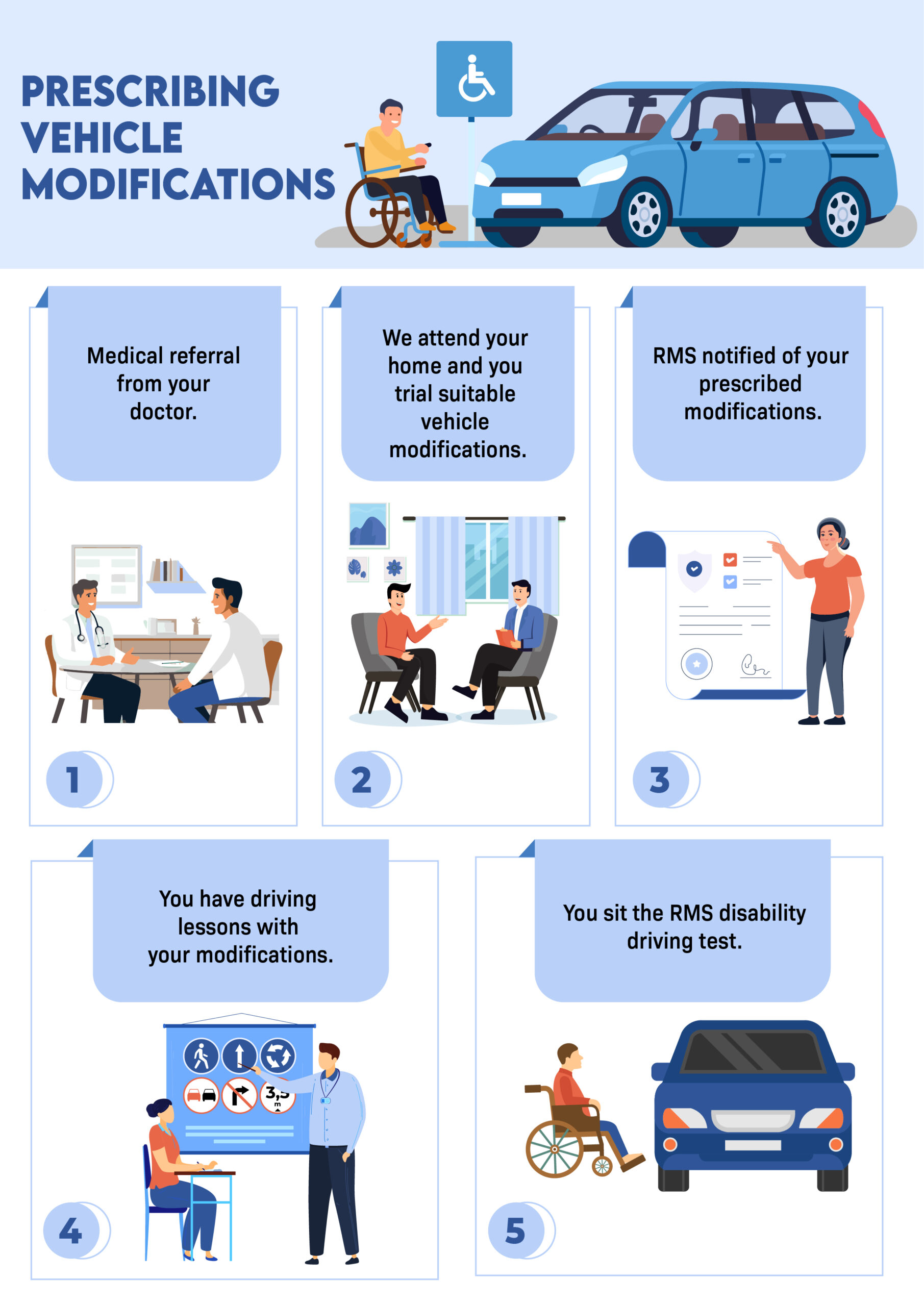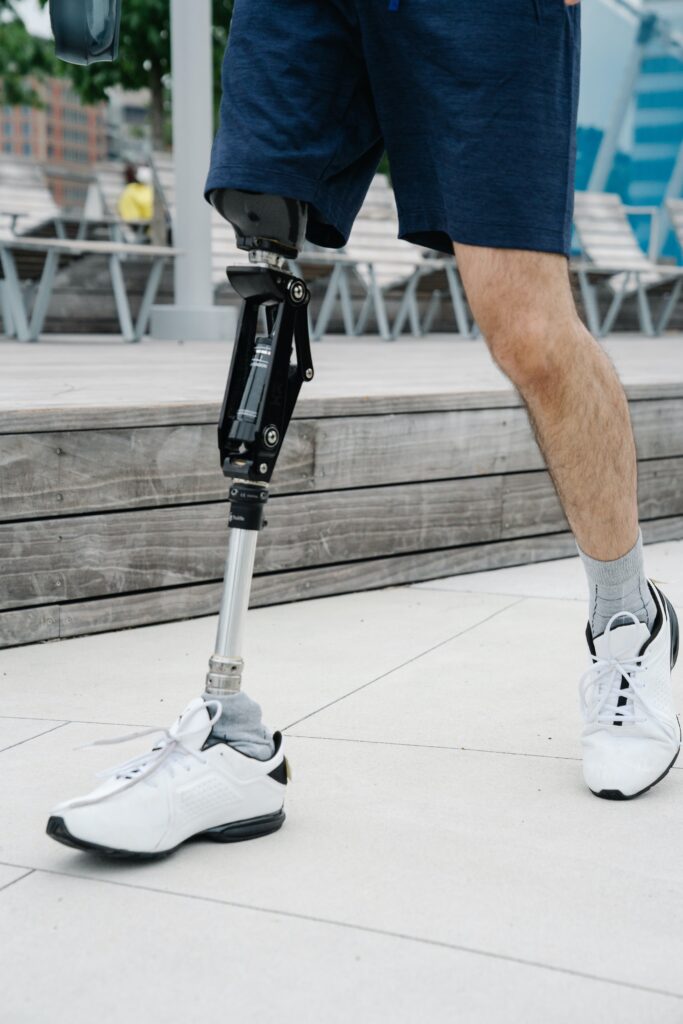Recommencing driving after a lower limb amputation
In today’s technological advanced environment, it is possible for a person who has had one or both lower limbs amputated to return to driving. In fact, there are a plethora of vehicle modifications that can overcome most physical deficits so that a person can continue to drive. However, as lower limb amputations are a significant physical disability, there are some assessments and tests that must be attended to ensure that the person is driving safely and in keeping with legal standards. This article will discuss what is involved in New South Wales to successfully regain your licence following this significant health event.

What happens to my licence after a lower limb amputation?
All drivers in NSW are required to inform the Roads & Maritime Services (RMS) about any medical condition or disability that potentially affects driving ability. By law, the driver is responsible for declaring their medical condition to the RMS, although many people are not aware of this. As such, what tends to occur is that the person’s doctor notifies the RMS of the person’s medical issue, usually by completing the RMS medical fitness to drive form. This is the process involved when someone has had a lower limb amputation. Thus, the initial stage of this process is to obtain a medical assessment of the limb amputation. The doctor must give the person medical clearance to return to driving and will commonly refer them for an Occupational Therapy (OT) driving assessment. The person’s GP may be sufficient to perform this assessment, however sometimes further assessment (e.g. by a medical specialist) may be recommended or requested by the person’s GP or RMS. For example, rehabilitation specialists are regularly involved in the medical decision-making about a person’s ability to get back to driving following an amputation.
Depending on the nature of the lower limb amputation, there is commonly the view for the assessment to prescribe vehicle modifications. The prescription of vehicle modifications is completed by a driver trained Occupational Therapist (OT). These are specialised OTs who have undergone extra training and study to complete these assessments. The completion of an OT driving assessment is the RMS-approved mechanism to assess a person’s fitness to drive following a lower limb amputation, as well as identify suitable modifications.
Once the RMS is notified of the amputation, they review the information and depending on the person’s condition, situation and likelihood of requiring modifications, they may downgrade their licence to a learner. In such instances, the licence remains a learner’s until the person successfully passes the OT driving assessment. For people requiring vehicle modifications, they also need to complete the RMS disability driving test.
What vehicle modifications are available?
Driving requires the delicate coordination of a person’s physical, cognitive and visual functioning. After a lower limb amputation, the driver’s physical capacity to control the vehicle foot controls may be severely affected. The options available to the person depend on which limb was amputated, the nature of the amputation, and if they require vehicle modifications to drive to RMS standards.
Drivers who have had both lower limbs amputated are likely to need modifications that enable them to use all vehicle controls with their upper limbs, known as hand controls. Hand controls allows them to utilise the brake and accelerator with their hands. This may also apply for a right lower limb amputation, unless the person has a prosthesis that they can drive with. Another possibility is a left foot accelerator, where the accelerator is moved to the left side of the foot brake, so the person does not need to utilise their right foot to drive. It is important to specify, however, that any prosthesis is classed as a vehicle modification by the RMS. Thus, the person must still undergo the RMS disability test. If the amputation occurred on the left lower limb only, typically the person’s driving is not affected, as the left leg is not generally required to drive, though they will often still be referred for an OT driving assessment. Usually, drivers who have had any lower limb amputation are restricted to driving automatic vehicles only.
What happens after the OT driving assessment?
The purpose of the OT driving assessment is to explore how the person’s condition or disability is affecting their driving, and if strategies may be put in place to mitigate or overcome any deficits. The OT sends their report to the RMS and the person’s referring doctor. In the case of lower limb amputations, how soon the person can return to driving largely depends on if they have been prescribed vehicle modifications. If the person can drive with a prosthesis (with no additional vehicle modifications required), the person can sit the RMS disability test. Generally, they can undertake the test at their convenience.
If vehicle modifications are necessary for the person to drive safely, the OT will recommend some specialised lessons so they can learn to drive with their prescribed modifications. During this time, their licence is set back to a learner, until they pass the RMS disability test. When the person feels comfortable with the modifications and can drive safely in all forms of traffic, they are ready to attempt the RMS disability test. The RMS disability driving test is conducted with the RMS directly with the purpose to judge if the person can drive according to legal standards with their necessary modifications. Once the test is passed, the person’s licence becomes endorsed with the modifications. From that point forward, the person must drive with the modifications at all times.



